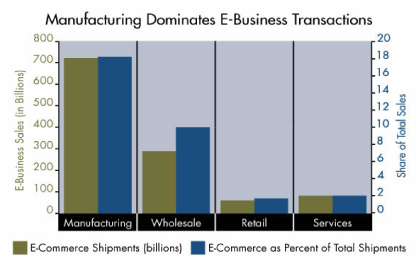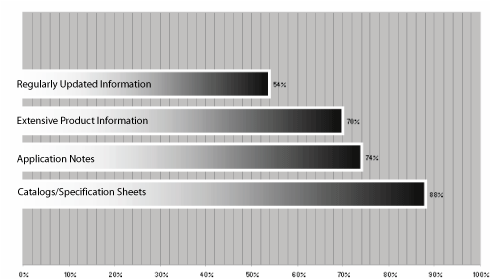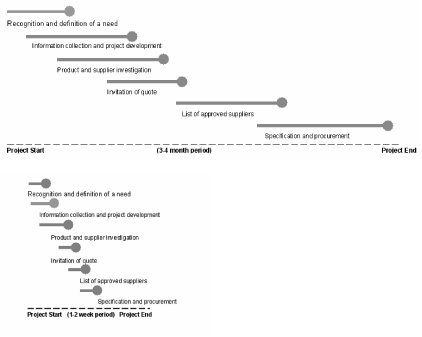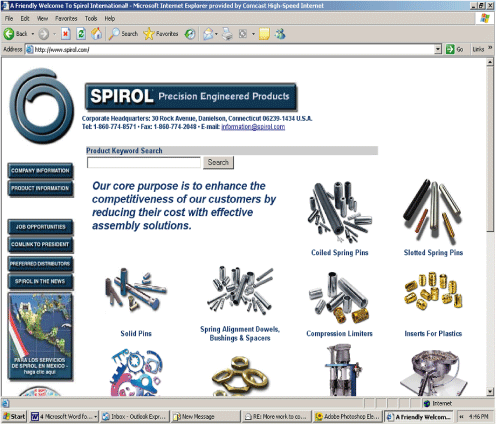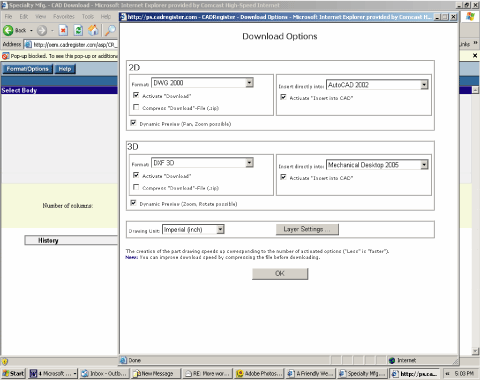October 2004
In our previous issue we looked at EII (Enterprise Information Integration) and its older sibling EAI (Enterprise Application Integration). The main driver behind EAI when it emerged in the mid-nineties was the need to integrate content and transactions for e-Commerce. The revolutionary benefits of eCommerce that were promised assumed that back-office marketing, product data, inventory, and transaction systems were all integrated and kept up-to-date, but the industry’s dirty little secret was that such integration either didn’t exist, or was extremely fragile and unreliable. When eCommerce actually worked like it was supposed to, it was almost prohibitively expensive. While the boom and bust were mainly economic phenomena, businesses’ technology infrastructure was incapable of delivering on the promise in any case.
As Bill Trippe points out in this issue however, in spite of all the ruined reputations, crashing companies and devaluation of portfolios, eCommerce continued to grow. While this may be obvious to most of us because our shopping habits are increasingly web-based, a much more dramatic increase has been in B2B (Business-to-Business, for those who have blocked it out of their memory!) eCommerce. Even in 2001 there was a staggering amount of business conducted over the Internet. Much of this is due simply to the use of XML messaging, but there are also some extremely interesting web commerce applications, especially in the manufacturing sector. These are worth looking at, and Bill shows you why.
Frank Gilbane
Download a complete version of this issue that includes industry news and additional information (PDF)
It feels old-fashioned to write the word “eCommerce,” but the reality is that billions of dollars in business has moved to the Web. While some people may still be shell-shocked by the dot.com fallout, a significant part of business process happens using the Internet as infrastructure. And while the better-known retail eCommerce ventures (amazon.com, ebay.com) are perhaps the biggest players in some people’s minds, they actually make up a small piece of the eCommerce pie; far more eCommerce is done between businesses.
Consider the manufacturing sector: According to 2001 data from the U.S. Department of Commerce (the latest date complete figures are available), 18% of manufacturing shipments were e-business transactions, compared to 1% of retail sales, 2% of service sales, and approximately 10% of wholesale commerce. More startling is the volume of manufacturing shipments through eCommerce, which totaled $725 billion and accounted for 68% of all e-business. These numbers dwarf retail eCommerce for the same period, which were $34 billion and less than 3% of all e-business.
Figure 1. By far, the largest volume of e-Commerce comes from the manufacturing sector. (U.S. Department of Commerce, 2001)
Granted, some infrastructure was in place for large businesses even before the Internet. For example, Electronic Data Interchange (EDI) has been around since the 1980s and has been heavily used by many large businesses such as Wal-Mart and Sears Roebuck. Though EDI is often used as a general term, it more specifically deals with the set of messages developed for business-to-business communication, both as part of the an ANSI effort as well as a United Nations Standard Messages initiative called EDIFACT, or EDI for Administration, Commerce, and Transport. Initially, formal EDI systems used one of these message sets and operated on proprietary networks. While EDI is still used using such networks, it has largely given way to XML-based approaches using the Internet. Indeed, EDI backers have devised their own XML schemas, and in particular XML/EDI. XML/EDI and other Internet- and XML-specific approaches, such as RosettaNet, BizTalk, and EBXML, now handle the lion’s share of eCommerce transactions.
The electronic messages themselves—purchase orders, invoices, and quotes—represent some of the “content” of eCommerce. Such messages, and the security and transaction apparatus applicable to them, are challenging pieces to the eCommerce puzzle. The transaction itself, though, is just one step in a lengthy process that begins with a prospective customer researching some kind of requirement, and continues through the marketing and selling process, the transaction itself, follow-on customer support, customer relationship management, and, later, up-selling and cross-selling.
Gilbane Report readers will know the next point to be made, and that is that content is closely tied to all of these processes, and so content management plays a fundamental role in Internet-based commerce. We have worked closely with many large companies that have been automating how content is used in design, manufacturing, sales and marketing, logistics, and customer support. These are areas of intense focus for many companies now, and the platforms and systems to support content management are growing more powerful and more functional all the time.
It is, of course, obvious why content management is fundamental to eCommerce: Commerce involves intensive communication at all phases of the process, and eCommerce requires that much of the communication happen automatically and online. When the products are complex, the content is correspondingly voluminous and complex, increasing the benefits of content management technology.
In fact, the challenge of content management is even more complex. Content management supports all kinds of business processes—research and development, design, manufacturing, marketing and sales, customer support, maintenance, and supplies. There is an important leverage point at the nexus of business processes and the content that supports these processes because of the intimate relationship between content and business process at all points in the buying and selling process, and others have tried to articulate this in various ways. Forrester terms this transactional content, and Gilbane Report colleagues Mary LaPlante and Bill Zoellick have offered a helpful definition:
Transactional content can be defined as shared information that drives business-to-business processes. It is the content that flows through the commerce chain, initiating and automating processes such as procurement, order management, supply chain planning, and product support. Transactional content is shared in the sense that it is exchanged among partners, suppliers, customers and distributors who each can contribute to it.
In the long run, organizations that most effectively tie content management and eCommerce together will profit from their efforts, and already there exist many compelling examples of success found among a wide range of businesses. The importance such examples possess is in proving that transactional content management is becoming necessary for the survival of all companies for whom sales rely upon complex information requests.
In the past, the sales process often swung into gear when a conversation between humans took place. Now, prospective buyers are looking for substantial information long before they are engaged with a sales person. This begins, of course, with the major search engines and other forms of Internet research, and it continues through the prospects seeking out as much information as they can. In short, buyers want to be in control of the information-gathering process, and part of being in control of the process is remaining anonymous for as long as possible.
In what can only be described as a self-reinforcing cycle, more and more business buyers—engineers, product managers, purchasing agents—prefer to do their research online, including the acquisition of technical specifications, engineering drawings, catalogs, application notes, and regularly updated information. And when these buyers get the right kind and level of information they seek, they buy. It is as simple as that.
Figure 2. B2B buyers have very specific information needs for which they now turn to the Web. (ICR Survey Research, October 2002, “Buyer Behavior E-Mail Study”)
Beyond the common sense arguments and anecdotal stories, there are plenty of hard facts to support this story. In researching, specifying, and ultimately sourcing an item for purchase, industrial buyers now do in a week what they formerly did in three or four months. This time compression is accompanied by a change in how this process is undertaken. Buyers who used to call suppliers on the phone are now using the Internet first and foremost. Consider the following facts:
- Industrial buyers rarely use the phone anymore. Where 70% of calls to a manufacturer used to be sales-related, the numbers have dropped, according to one in-house survey by a major manufacturing marketplace service, to only 4% (“1995, 2002 Call Center Tracking Response 800 Study,” Thomas Industrial Network).
- According to the April 2002 “Report on eBusiness,” by ISM/Forrester Research, 86% of buyers use the Internet to identify and research suppliers.
- B2B Magazine, in June 2002, reported that 90% of B2B buyers use the Internet to eliminate prospective manufacturers prior to telephoning remaining potential suppliers.
- According to ICR Survey Research’s October 2002 “Buyer Behavior E-Mail Study,” in the industrial marketplaces 96% of buyers are more likely to contact suppliers who provide a lot of product information versus those who don’t.
Figure 3. B2B buyers behavior has changed in the last 10 years, including the drastic contraction of project timelines, brought about, in large part, by e-Commerce-enabled content.
Transactional Content Management Examples
When buyers get the right level of information on a website, they buy, and when they don’t find it, they leave. The whole process of identifying suppliers, requesting a catalog, talking to a salesperson, requesting a quote, etc., not only has been compressed from several weeks or more into a week or less, but is now often done with little or no human intervention. What is content management’s role in this process? Well-established and successful efforts are instructive.
Consider two manufacturing companies, Linemaster Switch Corporation and Spirol International Corporation. Both companies are well-established businesses. Spirol (http://www.spirol.com/) began life in 1945 as U.S. Gasket and Shim Corporation, and Linemaster (http://www.linemaster.com/) grew out of Simonds Machine Company, which was founded in 1937. While Spirol manufactures a large product line of pins, spacers, inserts, and other components, Linemaster specializes in foot switches for medical and industrial use.
Even a quick look at the two companies’ web sites speaks to how important content and product information is. The Spirol site, for example, begins with a graphical view of the product catalogs, and users can begin to search the catalog and quickly find product information including photographs, technical specifications, and engineering drawings. (You can also download various catalogs in PDF form.) The Linemaster site takes a similar approach; the pages for individual products provide a great deal of technical specification. After all, the level of detail you can provide on the Web is not limited by page real estate or printing costs or capabilities.
Figure 4. e-Commerce sites rich in content, such as the Spirol International Corporation home page shown here, allow prospects to easily find a deep level of information in different ways, and without pushing sales personnel on visitors.
For a glimpse of how much information companies are willing to provide, take a look at the web site for a Minnesota company, The Specialty Manufacturing Company (http://www.specialtymfg.com/). Their web site is integrated around a product catalog. Main product categories begin on the home page, and by the first or second click the user is looking at detailed product information, design considerations—even CAD drawings. This web site is set up in such a way that the CAD drawings can be downloaded directly into CAD software such as AutoCAD. In this way, a technical specifier such as an engineer can search for, discover, and assess individual products—and go so far as to include the product design information directly into a technical design being rendered in the CAD software of choice. Perhaps most significantly, up until this point in the process, the prospect has accomplished all of this anonymously.
Figure 5. Within two or three clicks, visitors to this web page of the Specialty Manufacturing Company get to what they need, such as downloading CAD drawings so that engineers, for example, can include the product design information directly into technical designs.
Prior to the availability of this kind of information being available on the Web, a similar process for a design engineer was time-consuming and full of starts and stops. The engineer might have identified a supplier, called the supplier, requested a catalog, waited for the catalog to arrive, selected the part, called the supplier again, requested a drawing, waited for the drawing to arrive, and then perhaps even re-render the drawing s before it was included in the engineer’s design.
Now, the same technical detail is accessible online. Nothing has been purchased yet in this scenario, but the likelihood is high (some research says 80%) that the part included in the design is eventually included in the manufactured product. If you measure a transaction only at the time of the final sale, no transaction has occurred yet. But if you consider all of the touchpoints that have occurred here between buyer and seller, then the online catalog for The Specialty Manufacturing Company is indeed transactional content.
We include these companies because they are examples of the kind of transactional content that is now available. For the longest time, analysts, including The Gilbane Report, have been talking about this kind of application. Now it is happening. Websites that began as brochure-ware and later became static online catalogs are now becoming highly functional, dynamic product marketing and support platforms.
Transactional Content Management Challenges
Of course, such functionality comes with effort. The product catalog data must be digitized, normalized, and databased, and some organizations may require integration with eCommerce, ERP, and other applications. The site itself must be well designed, and the product data should be optimized for search engines and other kinds of navigation. None of these things happen for free, and the cost of this kind of work may be burdensome for some companies.
Because of these constraints, the content management market continues to broaden, and the offerings continue to widen. There are many tiers in the Web content management marketplace:
- Enterprise solutions, examples of which include Vignette, Documentum, Interwoven, and Stellent.
- Mid-level solutions, examples of which include Red Dot and Percussion.
- Small business solutions, examples of which include offerings from Microsoft, Ektron, and others.
- Open source solutions, examples of which cover the wide range of markets.
- Hosted solutions such as those from Atomz and CrownPeak.
Many manufacturing companies are small and mid-sized businesses whose technology needs span both information technology and the process technology for their core business. Because of this, not every small company can develop its own sophisticated Web presence. As a result, industrial search engines such as ThomasNet, GlobalSpec, and Kellysearch have emerged to fill an important market need.
These companies vary in approach. Kellysearch is both a directory and search engine that drives traffic to company websites, while GlobalSpec and ThomasNet include content in their offerings. For instance, both GlobalSpec and ThomasNet feature the kind of CAD drawings provision discussed earlier. ThomasNet is the 800-pound gorilla in the business—leveraging its substantial history and resources from the Thomas Register and Thomas Regional print products to provide the most content-rich site. They also provide content management tools to help small- and medium-sized manufacturers deploy searchable product catalogs on their own website. Their Catalog Navigator offers hosted catalog management functions to help industrial business convert more websites visitors into customers. ThomasNet also markets technology that allows smaller companies to put their CAD drawings online with their catalogs.
These industrial search sites provide benefits to both buyer and seller. For the seller, it allows even small companies to make their detailed product information available to a large, qualified audience of industrial suppliers – a position they’d be strongly challenged to create themselves on the Internet. For buyers, these aggregated content sites enable them to find many products and suppliers quickly and to compare products among various suppliers. When you consider the needs of a purchasing agent to quickly find competitive suppliers for a single part, these kinds of marketplaces make a great deal of sense.
Conclusions
The manufacturing marketplace is a large and active marketplace that is driven by eCommerce where content management has a vital role to play. However, many manufacturing companies are small- and medium-sized businesses, where IT is only one kind of investment competing for capital.
Because of these structural constraints, content management is not always the highest priority for these companies, even though they clearly need, at minimum, Web content management to support marketing and sales efforts. Moreover, many of the content management offerings are priced well beyond what these companies would be willing to spend. The enterprise solutions really are only for the biggest organizations, and even companies that sell mid-market content management solutions will tell you that they are selling to the Global 2000. This leaves many companies—indeed, most manufacturing companies—out of the target market for many content management technologies.
There are viable options for smaller companies, however. These begin with lower-cost offerings such as those from Ektron and Microsoft, but extend to hosted offerings and manufacturing sites such as ThomasNet and GlobalSpec. GlobalSpec’s offering is limited however; it focuses on the CAD drawings themselves, does not offer broader catalog functionality, and does not enable the manufacturer to include the digitized CAD drawings and content on its own Web site. ThomasNet’s Catalog Navigator is comprehensive; it includes the CAD features, it offers more catalog and e-commerce functionality, and even allows the manufacturer to include the content on their own Web site. This enables the manufacturer to use their own Web site as a key element in a broader marketing program that likely includes other “drive” programs such as pay-per-click advertising through Google, Yahoo, and other search engines and portals. Significantly, ThomasNet has also priced Catalog Navigator to be well within reach of the over 300,000 companies listed in the ThomasNet directories and well below the entry price of most commercial Web Content Management offerings.
In the long run, organizations that most effectively tie content management and eCommerce together will profit from their efforts. Indeed, the impact may even be more fundamental. One could argue that being successful at this kind of process will soon become necessary for survival in many industries.
Bill Trippe, bill@gilbane.com1.
1. With help from David Guenette!

